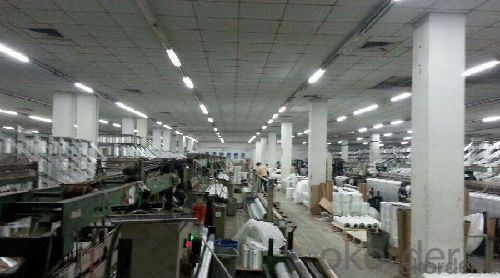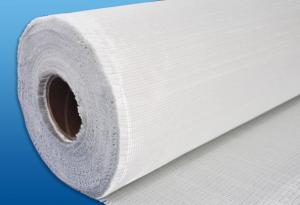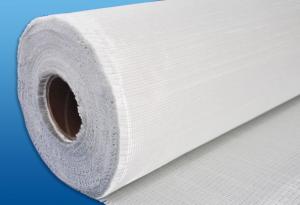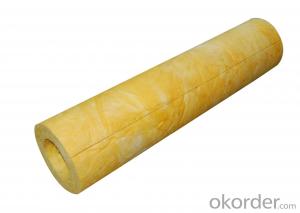FIBERGLASS SANDWICH FABRIC COMPLEX MAT
- Loading Port:
- China Main Port
- Payment Terms:
- TT or LC
- Min Order Qty:
- -
- Supply Capability:
- -
OKorder Service Pledge
OKorder Financial Service
You Might Also Like
Structure of FIBERGLASS SANDWICH FABRIC COMPLEX MAT Description:
This mat is the multi layered combination mat, generally made by mechanically stitching layers of roving or woven roving or chopped strand, in this case to one or both sides of synthetic fiber core (PP or PET), like a sandwich. The complex mat generally also be made from a combination of woven roving which are mechanically stitched with mats made of chopped strand to form the “bread”. Some complex mat even have no roving or fabric (i.e. complexes stitched from mats and veils without fabric layers). In all cases, the layers are mechanically stitched to the synthetic fiber core. It is mainly applied in the hand lay up, RTM and other close molding processes.
Main Features of the FIBERGLASS SANDWICH FABRIC COMPLEX MAT
◎ This fabric is compatible with UP Resin, Vinyl ester resin, epoxy resin system etc. It is widely used in closed mould applications for vehicle bodies and panels, marine (boat hulls and decks), windmill nacelles, leisure vehicle and structural shapes.
◎ The structure of sandwich to increase strength, reduce product weight and better surface finish.
◎ low resin-consumption and faster wet-out.
◎ Good manufacturability and mechanical properties
◎ Improved fatigue and impact resistance
◎ Good drapability for complicated shapes and good resin flow
FIBERGLASS SANDWICH FABRIC COMPLEX MAT Images


FIBERGLASS SANDWICH FABRIC COMPLEX MAT Specification
Code | Total weight g/m2 | Weight of each layer, g/m2 | Width, mm | ||
Chopping or roving or woven roving | Core Materials | Chopping | |||
E-MN300/P180 | 480 | 300 | 180 | 200~2600 | |
E-MNM300/P180/300 | 780 | 300 | 180 | 300 | 200~2600 |
E-MNM450/P250/450 | 1150 | 450 | 250 | 450 | 200~2600 |
E-MNM600/P180/600 | 1380 | 600 | 180 | 600 | 200~2600 |
E-LTNM300/P180/300 | 780 | 300 | 180 | 300 | 200~2600 |
E-LTNM450/P180/450 | 1080 | 450 | 250 | 450 | 200~2600 |
E-LTNM600/P180/300 | 1080 | 600 | 180 | 300 | 200~2600 |
E-WRNM400/P180/300 | 880 | 400 | 180 | 300 | 200~2600 |
E-WRNM600/P250/450 | 1300 | 600 | 250 | 450 | 200~2600 |
Packing:
Each roll is wrapped by PE film and then packed into carton. Stacking in bulk or palletized is available; the pallet shall be no higher than 2 layers.
FAQ of FIBERGLASS SANDWICH FABRIC COMPLEX MAT
Delivery Detail: 15-21days
Other spec. can be custom made as per customer's request.
- Q:Is fiberglass mat tissue suitable for insulation in laboratories?
- Insulation in laboratories can be effectively achieved using fiberglass mat tissue. This material is widely used for thermal insulation due to its exceptional thermal properties. With its high resistance to heat transfer, fiberglass mat tissue serves as an efficient insulator, maintaining stable temperatures within laboratory spaces. Moreover, fiberglass mat tissue offers resistance against moisture, chemicals, and fire, all of which are critical factors in laboratory settings. It can withstand exposure to harsh chemicals without degrading or losing its insulating properties over time. Therefore, it is an ideal choice for insulation in laboratories where various chemicals and substances are handled. In addition, the installation of fiberglass mat tissue is hassle-free and can be tailored to meet specific insulation requirements. It can be easily applied to walls, ceilings, and pipes, creating a barrier that prevents the transfer of heat and ensuring a controlled environment within the laboratory. In summary, fiberglass mat tissue is a suitable option for laboratory insulation due to its thermal resistance, chemical resistance, fire resistance, and ease of installation. It aids in maintaining stable temperatures, safeguards against chemical exposure, and ensures safety in laboratory environments.
- Q:Is fiberglass mat tissue resistant to solvents?
- Yes, fiberglass mat tissue is generally resistant to solvents.
- Q:What is the tear strength of fiberglass mat tissue?
- The tear strength of fiberglass mat tissue refers to the ability of the material to resist the propagation of tears or cracks when subjected to external forces. It is a crucial characteristic that determines the durability and performance of fiberglass mat tissue in various applications. The tear strength of fiberglass mat tissue is typically measured using standardized testing methods, such as the ASTM D1922 tear resistance test. This test involves subjecting a sample of the material to a controlled force, typically in the form of a tensile load, and measuring the force required to cause a tear or rupture. The tear strength of fiberglass mat tissue can vary depending on factors such as the manufacturing process, the quality of the raw materials used, and the specific application requirements. Generally, fiberglass mat tissues are designed to have high tear strength to withstand the stresses and strains encountered during installation and use. Fiberglass mat tissue is commonly used in industries such as construction, automotive, aerospace, and marine, where its high tear strength and other desirable properties make it an ideal choice. It is often utilized as a reinforcement material in composites, providing added strength and durability to the final product. In conclusion, the tear strength of fiberglass mat tissue is an important property that determines its resistance to tearing or cracking under applied forces. By ensuring a high tear strength, fiberglass mat tissue can withstand the demands of various applications and provide long-lasting performance.
- Q:What is the expected lifespan of fiberglass mat tissue?
- The lifespan of fiberglass mat tissue can differ based on several factors, including material quality, exposure conditions, and specific usage. Nonetheless, fiberglass mat tissue is renowned for its longevity and durability. When manufactured and installed correctly, fiberglass mat tissue has the potential to endure for many decades. It possesses resistance against decay, corrosion, and various chemicals, making it suitable for diverse industries and applications. Furthermore, fiberglass mat tissue is esteemed for its strength and capacity to withstand high temperatures. Nevertheless, it is crucial to acknowledge that prolonged exposure to harsh environmental elements, such as extreme temperatures, UV radiation, and moisture, may gradually degrade the material. Regular maintenance and appropriate care can aid in prolonging the lifespan of fiberglass mat tissue. In conclusion, while it remains challenging to determine an exact anticipated lifespan for fiberglass mat tissue, it is generally perceived as a long-lasting material when utilized and maintained properly.
- Q:Is fiberglass mat tissue resistant to pests and insects?
- Fiberglass mat tissue is generally not resistant to pests and insects. While fiberglass itself is not a food source for pests, the binders and resins used in the manufacturing process may attract certain insects. Additionally, small cracks or gaps in the fiberglass can provide entry points for pests. However, fiberglass mat tissue can be treated with specific chemicals or coatings to make it more resistant to pests and insects. It is recommended to consult with a professional or manufacturer to determine the best approach for pest and insect resistance in fiberglass mat tissue.
- Q:Does fiberglass mat tissue require any special handling or storage requirements?
- Fiberglass mat tissue necessitates specific care and storage measures. To begin with, it is imperative to handle fiberglass mat tissue delicately in order to prevent any harm or breakage. The tissue should be treated with gentleness and not pulled or dropped, as this may result in the separation or damage of the fibers. It is also advisable to wear gloves and protective clothing while handling fiberglass mat tissue to avoid any skin irritation or injuries. Regarding storage, it is crucial to keep fiberglass mat tissue in a clean and dry environment. Shielding it from moisture is of utmost importance, as water exposure can weaken the fibers and diminish its efficacy. Therefore, it is preferable to store fiberglass mat tissue in sealed, moisture-proof packaging or in a dry room with controlled humidity levels. Furthermore, fiberglass mat tissue should be kept away from direct sunlight and extreme temperatures. High temperatures can cause the resin in the tissue to cure prematurely, while excessive cold can make it brittle and more susceptible to damage. Hence, it is recommended to store fiberglass mat tissue in a cool and shaded area to maintain its quality and ensure its longevity. By adhering to these specialized handling and storage requirements, fiberglass mat tissue can be safeguarded and preserved in its optimal condition, ready for utilization in various industries such as construction, insulation, or automotive.
- Q:Does fiberglass mat tissue provide any acoustic insulation?
- Some degree of acoustic insulation is indeed offered by fiberglass mat tissue. By virtue of its fibrous structure, it possesses the ability to absorb sound waves and diminish their transmission through walls or other surfaces. However, it is vital to acknowledge that the extent of acoustic insulation provided by fiberglass mat tissue may differ based on factors like thickness, density, and the particular application. In certain instances, the attainment of optimal acoustic insulation may necessitate the incorporation of supplementary layers or thicker materials.
- Q:Does fiberglass mat tissue provide good moisture control?
- Fiberglass mat tissue does provide good moisture control. It is a widely used material in construction and insulation applications due to its excellent moisture resistance properties. The composition of fiberglass, which is made from fine fibers of glass, allows it to repel moisture effectively. This characteristic makes fiberglass mat tissue a suitable choice for areas where moisture control is important, such as in walls, roofs, and ceilings. Additionally, fiberglass mat tissue is often used as a vapor barrier, preventing the passage of water vapor and further enhancing its moisture control capabilities. Overall, fiberglass mat tissue is known for its ability to provide good moisture control, making it a reliable option in various construction and insulation projects.
- Q:Is fiberglass mat tissue resistant to moisture vapor transmission?
- Indeed, fiberglass mat tissue exhibits resistance to the transmission of moisture vapor. It serves as a remarkably robust and moisture-resistant substance, frequently employed in a multitude of scenarios that prioritize moisture management, including roofing, insulation, and flooring. The design of the fiberglass mat tissue is specifically tailored to impede the passage of moisture vapor, thereby preserving the quality and functionality of the accompanying materials. Given its capacity to resist the transmission of moisture vapor, the fiberglass mat tissue emerges as an optimal selection for environments where moisture control is of utmost importance.
- Q:Is fiberglass mat tissue suitable for railway infrastructure?
- Railway infrastructure can benefit from the use of fiberglass mat tissue. This material is strong and durable, offering excellent resistance to corrosion, weathering, and chemical degradation. It is commonly used in the construction industry to reinforce structures like bridges, tunnels, and platforms. When it comes to railway infrastructure, fiberglass mat tissue provides several advantages. Firstly, it boasts high tensile strength, enabling it to withstand the heavy loads and vibrations caused by train traffic. This prevents cracking and structural damage, ensuring the system's longevity and safety. Furthermore, fiberglass mat tissue is non-conductive, a critical characteristic for railway infrastructure. It reduces the risk of electrical shocks and short circuits, which are common concerns in rail networks. This makes it a reliable choice for railway projects, particularly in areas with electrical lines. Moreover, fiberglass mat tissue is lightweight and easy to handle, making it convenient for installation in railway projects. It also offers resistance to fire, making it a safe option for fire protection in railway infrastructure. Overall, fiberglass mat tissue is a suitable material for railway infrastructure due to its strength, durability, non-conductive nature, and fire resistance. Its use in railway construction contributes to the reliability, longevity, and safety of the railway system.
1. Manufacturer Overview |
|
|---|---|
| Location | |
| Year Established | |
| Annual Output Value | |
| Main Markets | |
| Company Certifications | |
2. Manufacturer Certificates |
|
|---|---|
| a) Certification Name | |
| Range | |
| Reference | |
| Validity Period | |
3. Manufacturer Capability |
|
|---|---|
| a)Trade Capacity | |
| Nearest Port | |
| Export Percentage | |
| No.of Employees in Trade Department | |
| Language Spoken: | |
| b)Factory Information | |
| Factory Size: | |
| No. of Production Lines | |
| Contract Manufacturing | |
| Product Price Range | |
Send your message to us
FIBERGLASS SANDWICH FABRIC COMPLEX MAT
- Loading Port:
- China Main Port
- Payment Terms:
- TT or LC
- Min Order Qty:
- -
- Supply Capability:
- -
OKorder Service Pledge
OKorder Financial Service
Similar products
New products
Hot products
Hot Searches
Related keywords



























